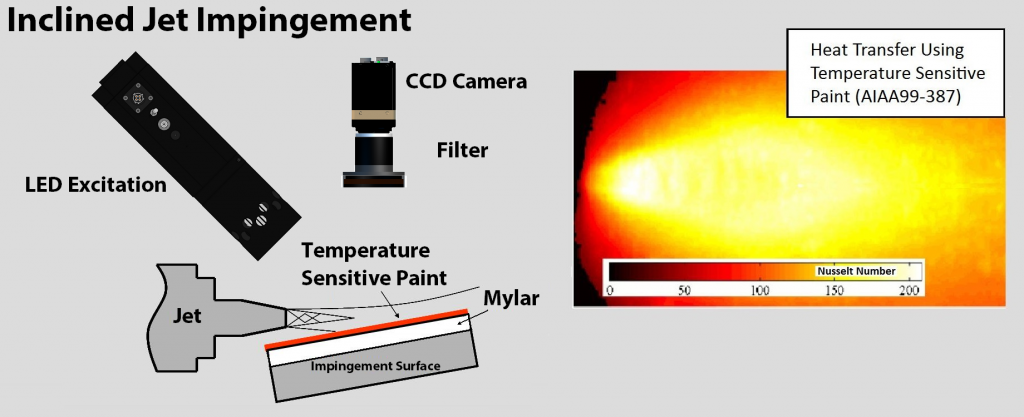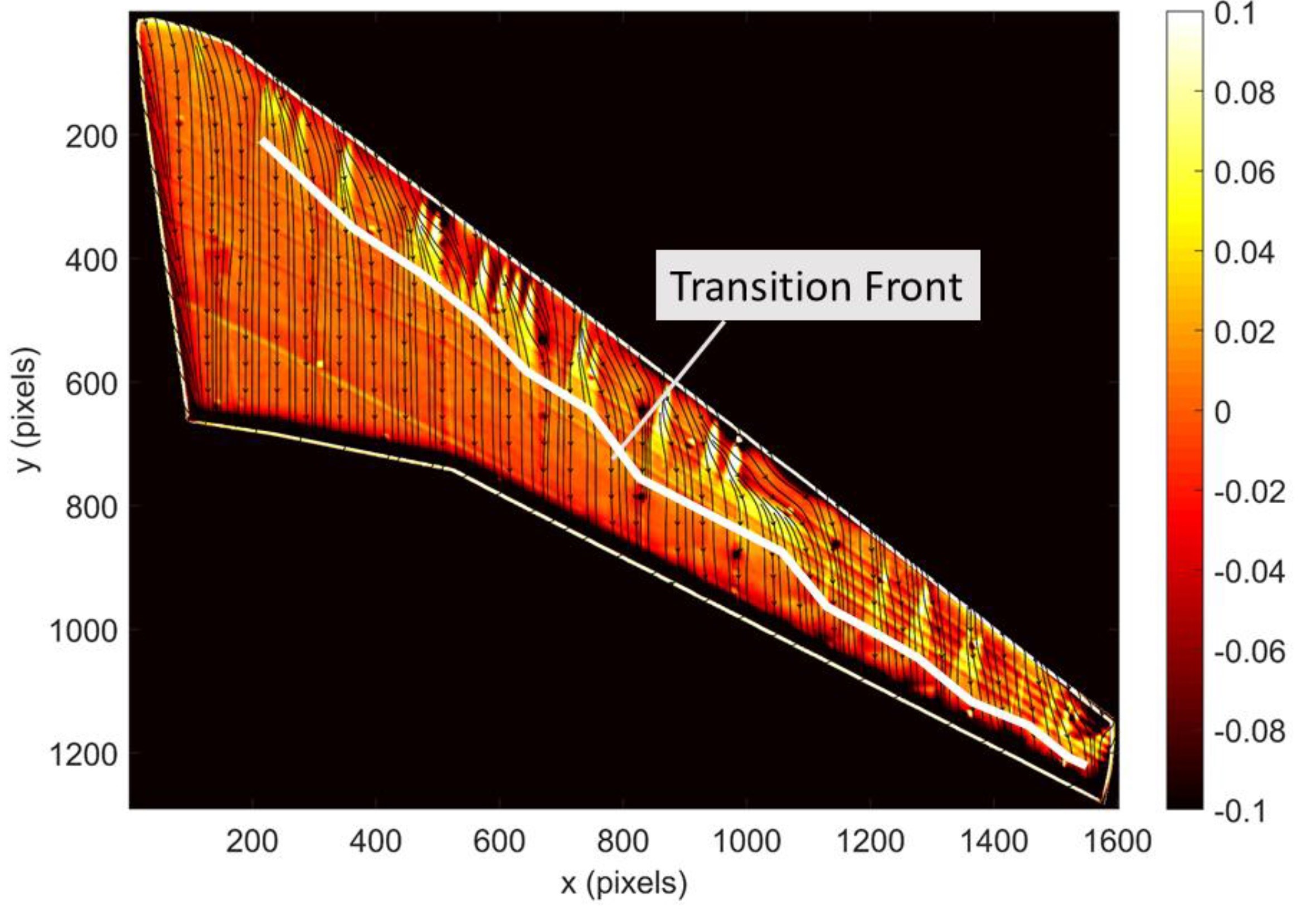TSP Applications
Temperature Sensitive Paint Applications
One of the first uses of TSP was for the detection of boundary layer transition. In this application, the heat flux to the surface, and therefore the surface temperature, is a function of the local heat transfer coefficient. As the heat transfer coefficient is substantially larger for a turbulent boundary layer as compared to a laminar boundary layer, a sharp increment in the surface temperature is indicative of transition. The movie shows the evolution of the surface temperature of a 5 degree cone in the Mach 6 Ludwig tube at Purdue University. A small transition bump is located just upstream of the field of view. Note the wedge of high surface temperature located behind the transition bump.

An example of the use of TSP for aerodynamics measurements is the measurement of heat transfer. In this example, a sonic under-expanded jet is impinging on a flat plate at an inclined angle. The surface is illuminated using a pair of LM2X-DM-460 LED arrays and imaged using a CCD camera through a 550-nm long pass filter. The heat flux is generated by heating an aluminum plate with resistive heating. A thin layer of Mylar (0.1-mm) is applied to the surface of the plate and a TSP is applied over the film. The plate is heated and images of the TSP are acquired and converted to temperature using the calibration. The surface temperature distribution is converted to heat transfer using a heat transfer model. In this case, the simple 1D model conduction model shown in the figure was used.

Global Skin Friction from TSP
The relative skin friction field is derived from the relationship with the surface temperature gradient measured by temperature sensitive paint (TSP) using the Horn-Schunck optical flow equation.
The simple model is valid for steady flows with large spatial surface temperature changes. This type of experimental setup is common for flows with heated surfaces (jet impinging on heated plate), or in high enthalpy blow-down facilities where the temperature change of the model is relatively large. Global skin friction from TSP is also suitable for flows such as shock-wave boundary-layer interactions, boundary-layer transition on an airfoil, and junction flows.

ISSI Temperature Sensitive Paints
For ordering information please contact our sales department: [email protected] or call us at (937) 630-3012
For technical support, please contact our support department: [email protected] or call us at (937) 630-3012
